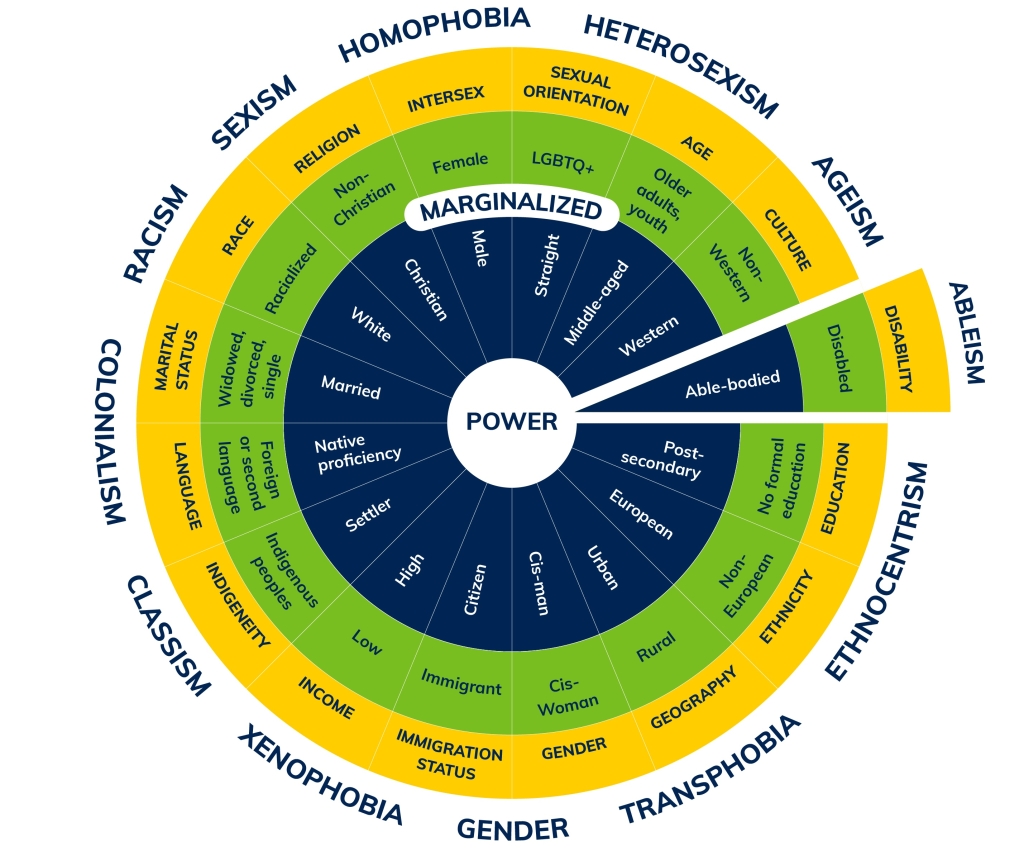Understanding Equity, Diversity, and Inclusion (EDI)

Equity, Diversity, and Inclusion (EDI) are principles aiming at creating a just, affirming, and equitable learning environments where all students have opportunities for connecting, learning, and developing key life skills.
|
Equity is a just, fair, and principle approach to upholding equal treatment for all. It does not just mean equal treatment for all, it means acknowledging and dismantling the barriers that are causing people to experience things differently. |
||
|
Diversity has many facets that intersect, such as race, ethnicity, gender, gender identity and expression, socio-economic status, nationality, citizenship, sexual orientation, ability, age, family status, religion, and language. It also refers to the unseen dimensions of identity - beliefs, ideologies, world views, and knowledge systems. |
||
|
Inclusion means that all people have the right to be valued, appreciated, and respected as members of your classroom and school community. Fostering a sense of inclusion is critical for supporting all students. |
Video: Equality, Equity, and Social Justice
Every individual is multidimensional and has various identities that make up who they are. These identities influence an individual’s position of power and privilege in their community and can act as either a barrier or facilitator to participation. Those who are experiencing physical and/or social barriers may not be experienced by others in their community, even by those who share many of the same personal, social, economic, and/or environmental characteristics.
Understanding EDI Intersectionality
Intersectionality is a framework for conceptualizing a person, group of people, or social problem as affected by a number of discriminations and disadvantages. It considers people’s multiple identities and experiences for understanding the complexity and nuances of barriers they face, how they are interacting with one another, and how these can impact one’s lived experiences. This theory asserts that individuals are often simultaneously disadvantaged by multiple sources of oppression: their race, class, gender identity, sexual orientation, religion, and other identity markers. (ETFO)
However, the specific experience of an individual differs depending on how much power/ privilege is associated with their identity. For example, a person who has a disability, is racialized, and identifies as Queer, has a different experience than a person who has a disability, is Caucasian, and identifies as heterosexual. Although they both identify as |a person with a disability, their respective races and sexual orientations will produce dissimilar lived experiences. Therefore, both individuals in this instance will have different needs.
In Canada, equity deserving groups continue to face barriers to equal access, opportunities, and resources due to disadvantage(s) and discrimination(s) and actively seek social justice and reparation. Each person can locate a part of their identity on each slice of the wheel below:

Image: Adapted version of “Wheel of Power” by Sylvia Duckworth
Those who associate with an identity closer towards the center are considered to have a more privileged identity. Those who associate with an identity further outward are considered to have a more marginalized identity. For example, in the disability segment of the wheel, able-bodied individuals generally hold more privilege in society and are therefore positioned closer to the center. In contrast, individuals with disabilities are often found on the outer edge, reflecting their frequent marginalization within society.



